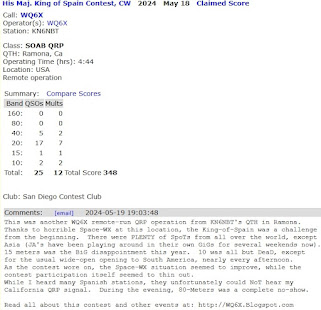Having upgraded the WQ6X station from a Yaesu FT-1000mp to the newer [sic] (2009-model)
FT-2000, I can tell you that while both radios are state-of-the-art, contest quality and WaY beyond
the competition, aesthetically the color screen FT-2000 is clearly a step up over the amber Monochrome screen predecessor.
Many features built-in to the FT-2000 were more-or-less optional add-ons with the 1000mp predecessor, such as 6-meters, CW and DVK playback memories, a more robust DNR, DNF
and Contour facilities. The 2000's VRF (essentially a front-end preselector), far exceeding the capabilities of most external preselector units I have tried. In addition, the noise blanker (NB)
facility actually noise-blanks. The NB1/NB2 circuits easily subject to (what is known as) "AGC pumping". Similar to ICOM's dual IF notch, the dual-knob notch filter in the 2000 makes it
easier to eliminate electronic device/RFI "squiggles".
The dual-RX facility is more refined in the FT-2000, altho like the 1000mp, there is no DSP-facility
or shift/notch features in the Sub-RX - those are implemented properly in the FTDX-5000 - another reason having a pair of Autek QF-1A filters (one for each RX) is so useful. The aux. notch filter in the QF-1A - on par with the Yaesu notch circuits - produces audio improvement that even the FT-2000 itself cannot.
The roofing-filter for VFO-A is incredibly effect, selectable down to 3-khz, is incredibly effective. Putting the Sub-RX (VFO-B) on the same frequency, the contrasting interference levels between
the two receivers is quite dramatic.
The screen icons atop the color VFD display make it easy to determine which front-end
and I-F options are selected and in which order.
The meter knob, IPO button and QMB (Quick Memory Bank) facility are a step above the
FT-1000mp, while the many additional functions built around the VFO-B knob truly take things
to the next level, altho require some practice to get an intuitive feel for making things work - this
is where reading the comprehensive manual (for BOTH the FT-1000mp and FT-2000) comes in.
When it comes to RTTY, both Yaesu transceivers can run full-duty 100-watts, altho the FT-2000
built-in heatsink system allows the electronics to run even cooler.
With the exception of the Digital Notch Filter (DNF) which is audio-based, the remaining DSP features all operate at the I-F level. While both the FT-1000mp and FT-2000 sport dual-RX capabilities in the same band, the FT-2000 seems to operate more robustly when using CW from one VFO and Ssb from the other VFO. This makes running multi-mode contests (like FD, the IARU GiG, CQP and
the ARRL 10-meter contest run more smoothly.
The subtle but REAL ergonomic difference between the FT-1000mp and the FT-2000 comes from
the FT-2000's VFO knob, essentially stolen (at least in concept) from the FTDX-9000 Series of transceivers. One thing I really like that was not continued onto the FT-2000 was the Shuttle-Jog mechanism found in both the FT-920 and FT-1000mp series transceivers. With that exception,
the FT-2000 knob-central is far-superior, especially in the heat of radiosport operations.
While I still love the FT-1000mp, the FT-2000 has truly won over my aesthetic sense and become
truly a joy to operate. The features that are still left lacking in the FT-2000 are of course implemented in the FTDX-5000 (originally ~$4800). Ironically, I paid $1200 (2016) for the fully-loaded FT-1000mp picked up in So. California, while the FT-2000 purchase in 2021 was only $1025 shipped direct.
What about you? Are You or have you been a fan of the Yaesu FT-1000mp and/or FT-2000 series?

.Jpg)













.Jpg)



